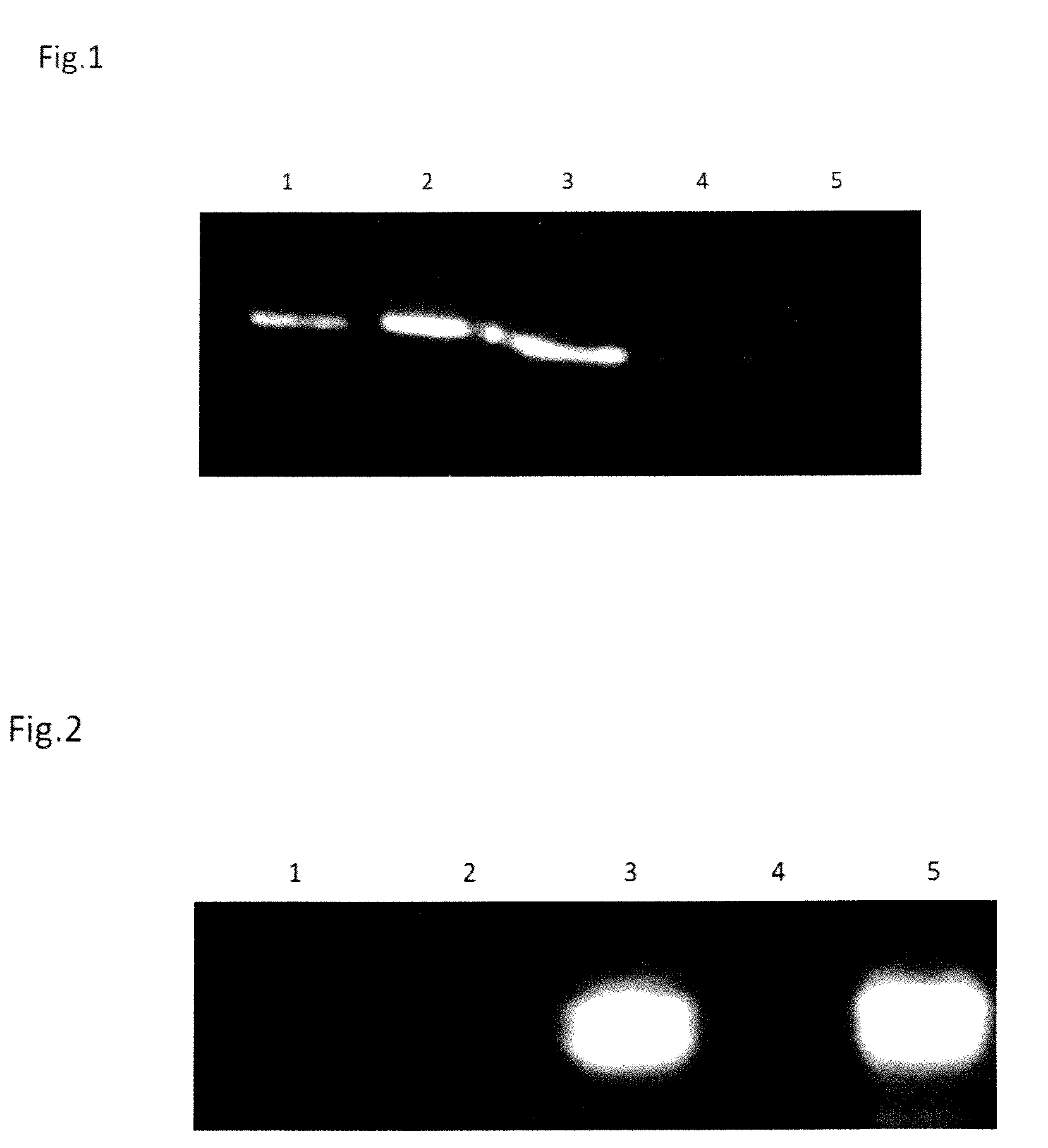Method of painting microvesicles
a microvesicles and microvesicle technology, applied in the field of microvesicles painting, can solve the problems of determining what is being lost, unable to enrich for enveloped viruses as well as mmv and unable to achieve the effect of mmv enrichment,
- Summary
- Abstract
- Description
- Claims
- Application Information
AI Technical Summary
Benefits of technology
Problems solved by technology
Method used
Image
Examples
example 1
[0106]Obtaining samples comprising exosomes:
[0107]8×T175 flasks of HEK293T cells were cultured in DMEM until 80-90% confluency. The adherent cells are washed once in 10 ml of PBS, and 18 ml of serum-free DMEM is added into each flask. The cells are incubated in CO2 incubator at 37° C. for approximately 24 hours. After 24 hr incubation, the supernatants (containing exosomes secreted from the cells) are collected.
[0108]By combining the supernatants of two flasks 4×36 ml of cell supernatant were placed in 4×50 ml falcon tubes and centrifuged at 1200 g for 8 minutes at 4° C. 4×35 ml of the supernatant are carefully pipetted up, leaving 1 ml of supernatant and the cell debris in the falcon tube. The supernatant sample is now centrifuged again at 8400 rpm (approx. 12,000 g) for 15 minutes at 4° C. to remove smaller fragments of the cells and cell membranes. After centrifuging, 4×34 ml of the supernatant is taken out and placed into 4 x new tubes. 1 ml of supernatant and any remaining cell...
example 2
[0109]Standard Purification of Exosomes via Ultracentrifugation
[0110]After the intermediate centrifugation step, 4×34 ml of the supernatant were taken out and placed into 4 x new ultracentrifuge tubes. 1 ml of supernatant and any remaining cell debris was left in the used tube. The supernatant samples (within the 4 new ultracentrifuge tubes) are centrifuged at 26,500 rpm (−120,000 g) for 2 hours at 4° C. After centrifugation, the supernatant is discarded and the tube is carefully blotted dry. The remaining pellets (containing exosomes) are resuspended in 2.5 ml of PBS by washing the bottom of the tube. From this 2.5 ml resuspended exosome sample is 5×500 ul samples have been transferred into 5 tubes and labelled as follows:[0111]1) E−: unpainted exosomes, ultracentrifuged (control)[0112]2) E+: painted exosomes, ultracentrifuged (to get rid of unbound gfp-gpi protein)[0113]3) E-MB+: unpainted exosomes, applied over pre-coated beads and subsequently eluted[0114]4) E-MB−: unpainted exo...
example 3
[0117]Generation of His-Tagged GPI-GFP Protein
[0118]The HEK 293 cell line used has been altered to produce the his-tagged and monomeric version of the GPI-GFP protein that is used in the example and to be resistant against hygromycin. In the lab the cells are referred to as “HEK293monogghishyg cells”. They were grown up in a medium which contains 500 ml DMEM high-glucose (Invitrogen 11960 or 11965), 50 ml deactivated FBS (PAA A15-101), 5 ml of 100 mM Sodium Pyruvate (Gibco 11360) and 5 ml of 200 mM L-glutamine (Gibco 25030).
[0119]Finally, hygromycin was added to a final concentration of 50 ug / ml. The cells were grown up in 5-6 T175 flasks to near confluency, then the cell medium was discarded and the cells were washed with 5 ml PBS per flask and then scraped off. The scraped cells from the flasks were collected in 10 ml of PBS each and all flasks rinsed out carefully. The PBS cell suspension was then centrifuged in 15 ml Falcon tubes and centrifuged at 200 g, for 5 mins, at 4° C.
[01...
PUM
| Property | Measurement | Unit |
|---|---|---|
| diameter | aaaaa | aaaaa |
| diameter | aaaaa | aaaaa |
| diameter | aaaaa | aaaaa |
Abstract
Description
Claims
Application Information
 Login to View More
Login to View More - R&D
- Intellectual Property
- Life Sciences
- Materials
- Tech Scout
- Unparalleled Data Quality
- Higher Quality Content
- 60% Fewer Hallucinations
Browse by: Latest US Patents, China's latest patents, Technical Efficacy Thesaurus, Application Domain, Technology Topic, Popular Technical Reports.
© 2025 PatSnap. All rights reserved.Legal|Privacy policy|Modern Slavery Act Transparency Statement|Sitemap|About US| Contact US: help@patsnap.com

